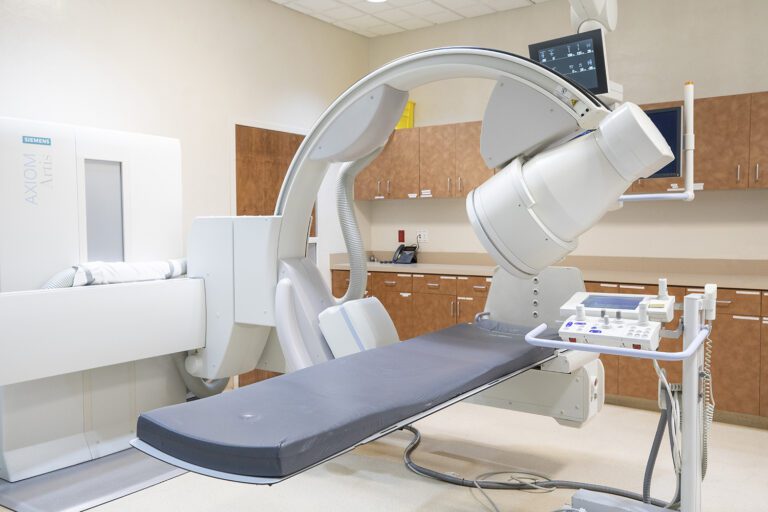You will be asked not to eat after midnight the night before the procedure. You may have clear liquids up to 2 hours before the procedure but should not drink anything after that.
If you are taking prescribed anticoagulants (blood thinners) such as Coumadin or Plavix, you should ask your physician for instructions prior to the procedure. Patients should not take over-the-counter aspirin or aspirin-containing medications for at least 5 days prior to their procedure. Please consult with your doctor or healthcare provider before stopping ANY medications.
Please arrive for your procedure with a responsible adult who can drive you home.
Prior to your procedure, you will have a thorough consultation with our Interventional Radiology nurse practitioner and one of our Interventional Radiologists. All possible treatment options will be reviewed and discussed with you in detail, and all of your questions will be answered.
After you arrive for your appointment, you will be escorted to a procedure room, where you will be asked to change into a patient gown. You will have an intravenous (IV) line placed in your arm so that pain medication and sedatives can be administered prior to and during your procedure. You will be positioned on an exam table, and fluoroscopy will be used to determine the most appropriate needle entry site. The radiologist will cleanse the overlying skin, and a small amount of local anesthetic (lidocaine) will be injected with a small needle. You will feel a tiny pinch similar to a pinprick while the anesthetic is injected.
After the area becomes numb, the radiologist will insert one or two needles into the fractured vertebral body while observing under fluoroscopy. A small amount of contrast material may be injected to confirm the proper needle position. A cavity may be created to deposit the cement. Bone cement mixed with a small amount of inert barium will then be injected through the needle into the fractured vertebral body. Once a sufficient amount of bone cement has been placed, the needles will be removed, and bandages will be placed over the insertion sites. You will remain on your stomach for about ten minutes while the cement begins to harden. You will then turn over and lie on your back for up to two hours while the cement continues to strengthen. You will then be discharged and will be given instructions and phone numbers of whom to call if you have any problems.
The contrast agent that is used during the procedure is an iodine-based material. Radiology Ltd. uses only non-ionic contrast agents (the safest kind), but with all contrast agents there is always the potential for allergic reaction. Be sure to tell your technologist if you have experienced a reaction to CT contrast in the past.
For your safety and the protection of others, we do not allow anyone other than patients in our exam rooms.
Significant complications related to vertebroplasty are very uncommon. The primary risks associated with this procedure include:
• Bleeding
• Infection
• Allergic reaction to the contrast material
• Cement leakage affecting adjacent neural structures
Most vertebroplasty procedures are very well tolerated. You may apply ice to the needle insertion site to reduce swelling if necessary. Symptoms usually disappear within 48 hours; contact your physician or healthcare provider if they persist for more than two days.
A final report describing the procedure will be sent to your doctor or healthcare provider.
Reports are also available on the Patient Portal


